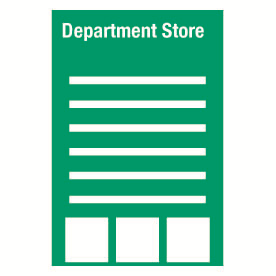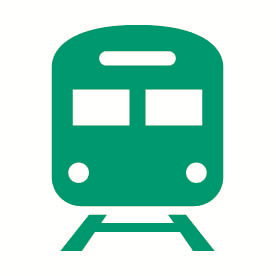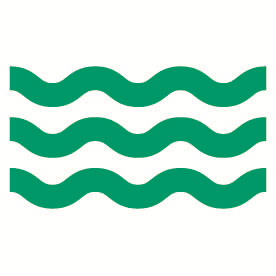Table of Contents
First Steps
When you feel strong tremors, take cover, protecting your head with your arms or belongings such as a bag, cushion, or coat. Tremors can cause doors and windows to warp, so ensure your escape route by opening one before taking cover. Strong shaking usually lasts less than a minute. However, because large aftershocks can occur, once the initial tremor is over evacuation should be carried out swiftly.

At home
![]() Take cover under a sturdy table or desk. Once the tremors stop immediately extinguish any open flames (stoves, heaters, candles, etc.), and turn off breakers and gas valves before evacuating. In crowded urban residential areas it is especially important to safeguard against the outbreak and spread of fires.
Take cover under a sturdy table or desk. Once the tremors stop immediately extinguish any open flames (stoves, heaters, candles, etc.), and turn off breakers and gas valves before evacuating. In crowded urban residential areas it is especially important to safeguard against the outbreak and spread of fires.
Outdoors
 Beware of debris from damaged buildings, walls, telephone poles, traffic lights, falling glass, billboards, etc., and make your way to an open space. Avoid walking in roadways whenever possible.
Beware of debris from damaged buildings, walls, telephone poles, traffic lights, falling glass, billboards, etc., and make your way to an open space. Avoid walking in roadways whenever possible.
Inside buildings, shopping complexes and underground shopping centers
 Move away from any glass, lighting fixtures or display shelves. When evacuating, follow the instructions given by those in charge. Do not use elevators or escalators. If you are in an elevator when tremors start, press all the floor buttons and get off at the first floor you stop at and evacuate via the stairs. Older office and high rise buildings pose a high risk of collapsing and should be evacuated immediately. Many newer buildings include earthquake resistant or seismic isolation structures, and will pose less of a threat. In buildings with few support columns, ceilings may collapse.
Move away from any glass, lighting fixtures or display shelves. When evacuating, follow the instructions given by those in charge. Do not use elevators or escalators. If you are in an elevator when tremors start, press all the floor buttons and get off at the first floor you stop at and evacuate via the stairs. Older office and high rise buildings pose a high risk of collapsing and should be evacuated immediately. Many newer buildings include earthquake resistant or seismic isolation structures, and will pose less of a threat. In buildings with few support columns, ceilings may collapse.
Trains and subways
 Hold onto handrails and straps and beware of sudden stops and falling items from the luggage rack.
Hold onto handrails and straps and beware of sudden stops and falling items from the luggage rack.
While driving
 Reduce your speed gently and pull to a stop on the left side of the road. If a parking lot or other open area is available it is better to stop there. Once the tremor stops exit your vehicle and begin evacuating on foot. In mountainous areas where landslides pose a danger or coastal regions where tsunamis are possible, you should evacuate to safety immediately.
Reduce your speed gently and pull to a stop on the left side of the road. If a parking lot or other open area is available it is better to stop there. Once the tremor stops exit your vehicle and begin evacuating on foot. In mountainous areas where landslides pose a danger or coastal regions where tsunamis are possible, you should evacuate to safety immediately.
Coastal regions
 If you are near the sea, once a large tremor hits it is generally best to evacuate towards higher ground immediately. Tsunami arrival times can range from a matter of minutes to several hours, and waves can continue for hours or days. Even if a tsunami does not occur immediately after the earthquake, it is dangerous to return to seaside areas. Be especially wary if the ocean water recedes significantly, as this is a sign that immediate evacuation is necessary.
If you are near the sea, once a large tremor hits it is generally best to evacuate towards higher ground immediately. Tsunami arrival times can range from a matter of minutes to several hours, and waves can continue for hours or days. Even if a tsunami does not occur immediately after the earthquake, it is dangerous to return to seaside areas. Be especially wary if the ocean water recedes significantly, as this is a sign that immediate evacuation is necessary.
Evacuation Facilities
Following a major earthquake, public transport suspensions are common, and homes may be rendered unsafe for habitation. The types of facility listed below exist to assist stranded commuters and those who have lost their homes after a disaster.
Evacuation sites
Parks and open spaces that are safe from debris and fires. These are generally the first port of call when evacuating from an earthquake.
Support stations
Shops and facilities which offer free water, toilet facilities and information to assist those who making their way home on foot after a disaster. Look for the marks below. Often street side vending machines will also be opened up, free of charge.


Potential temporary shelters
Public buildings that may be opened for use by those stranded by suspension of transport services etc. Basic food, drink and access to emergency phones to contact hotels and embassies are provided. Evacuees can stay for a maximum of 3 days, once the facility has been deemed safe.
Shelters
Public buildings like schools where those who have lost their homes can stay, usually for a number of weeks.
Communication
When a disaster occurs, large numbers of people will attempt to contact each other simultaneously, and telephones, especially mobile phones, will become extremely difficult to reach. Mobile messaging apps, such as Whatsapp, Line and iMessage are likely to be more reliable ways of staying in touch.
In order to allow people to confirm the safety of their family and loved ones, phone companies have established Emergency Dial and Disaster Message Board Services. These services are made available whenever an earthquake of 6 Lower or above occurs in Japan, as well as any other major disaster such as those caused by typhoons or heavy rain.
Emergency Dial is a voice message service, and is usually easier to connect to than individual numbers. It can be reached from public phones as well.
Disaster Message Board Services, accessible from mobile phones, allow you to leave a short text message. Web171 is a similar service that can be accessed via Internet. Check the websites listed below to see how each service works.
Message boards will also be set up at individual evacuation centers where people may leave their name and message. In the event that telephone and Internet should become completely unavailable, it is important that you and your family choose an evacuation point in advance and discuss your means for contacting one another.
Disaster Emergency Dengon Dial
*Voice RecordDisaster Message Board Services
Disaster Message Board (web171)
*Web text message boardInformation Sources
If an earthquake occurs, the first information to be reported will be when and where the earthquake occurred, followed by more concrete information on the magnitude, Shindo rating of the regions hit, and the possibility of tsunami. If transportation is also impacted, relevant information will be displayed.
During a large disaster it is easy to panic. It is necessary at these times to gather information from a wide range of public sources and to evaluate them with an objective and level head.
In order to avoid contributing to further panic and misinformation, do not repeat any information when you are unaware of its source.


